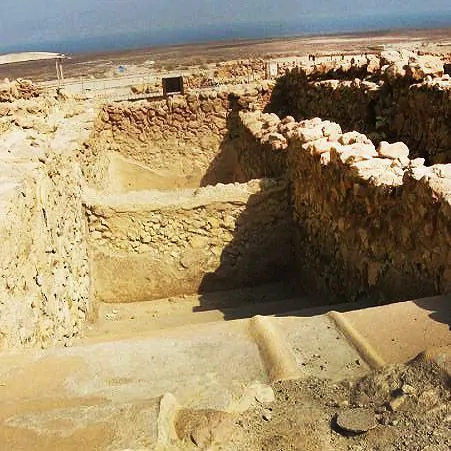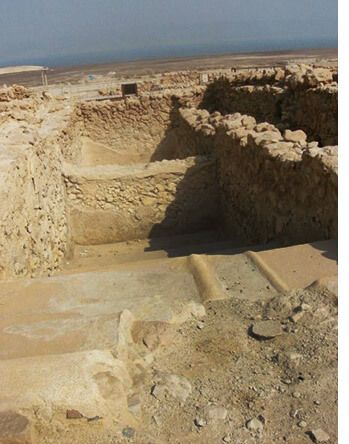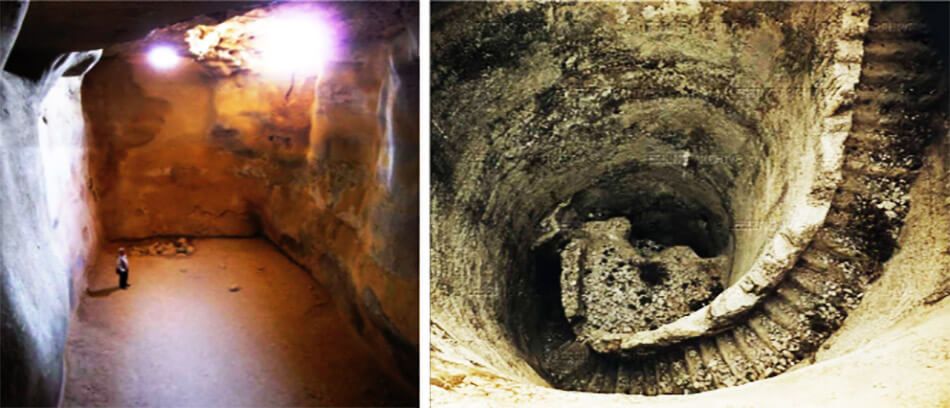Cisterns in the Ancient Near East

Cisterns in the Ancient Near East
By Ryan Outland
Where there is water, there is life, making that substance of life the most important and most necessary substance in order for people to live. In order to collect a supply of water, men of Israel constructed wells and cisterns in order to survive. Cisterns were the most common way of gathering “clean” water for the purpose of drinking, cleaning, and occasional sacrifices. Cisterns were often built to collect rainwater, operating as a drain to gather runoff water, which would be contained inside. Cisterns were an essential part of life for an Israelite in the times of the bible and we see their impact in the stories of Joseph and the time of the kings. Learning more about the construction and the use of cisterns can help us understand more about the people in biblical times.
When discussing the topic of cisterns, there are a series of questions to consider, with the first question being: “What is it, and what is it made of?” the term for Cisterns is derived from the Latin word, “cisterna,” meaning water tank. Cisterns are known to have been used all the way back to the Neolithic Age, resulting in a worldwide spread of water gathering technology. Cisterns were often constructed for areas where access to rivers or springs was not readily available, resulting in a collection system of gathering rainwater and having it settle within a pocket of the ground, known as a cistern, or a reservoir. Runoff cisterns were known to be dangerous water as basically everything that was within the water, including feces, urine, or dead animals, would collect within the bottom of the cistern, thus contaminating the water. Cisterns were often carved from bedrock within the city, so that city dwellers can survive if an enemy approaches the city. After enough men would carve into the bedrock, they would take fresh plaster and align the inside of the cistern, in order the cisterns would not leak. Cisterns were not only used for water, but when dried up and no longer in use, they were used as burial places and even prison cells, which is evident in the story of Joseph in Genesis. Overall, Cisterns were very easy to construct, but were most often utilized by modest or small people, being that the water was neither fresh nor clean.

Further examples in the scriptures in which cisterns are mentioned are when kings have used their power and influence to build cisterns for their many servants and for their livestock, as is shown in 2 Chronicles 26. “Uzziah built towers in Jerusalem at the Corner Gate, at the Valley Gate and at the angle of the wall, and he fortified them. 10 He also built towers in the wilderness and dug many cisterns, because he had much livestock in the foothills and in the plain. He had people working his fields and vineyards in the hills and in the fertile lands, for he loved the soil.” This a very simple and basic display of cisterns in the old testament, along with who built them, and what they were used for. There are multiple accounts in scripture where cisterns are mentioned as being dug and constructed. With this added knowledge we can further understand the purpose of Cisterns and what their function was within the ANE.

Cisterns serve as the primary function of providing water for small inhabitants of people so that they may continue living on in their communities the same way they always have. Not only do cisterns serve as a significant source for life, but they also have been used as teaching points and tools for the kingdom of Israel. In the many varieties of cisterns that exist, most of them have been engineered to resist leakage of water and masterfully crafted. While most were crafted into bedrock and covered with plaster on the inside, there are many variations of the water source that has been traded throughout the middle east. In summary, cisterns are a large key in creating a culture for early Israel and have always been a source of life in a barren land.
Bibliography
“The Great Mikveh Debate.” The BAS Library, 5 Nov. 2015, members.bib-arch.org/biblical-archaeology-review/19/2/11.
Keilholz, Patrick. The Ancient Cisterns of Hellenistic Gadara/Umm Qais (Jordan). Universität Der Bundeswehr München.
Holy Bible: Esv Bible. Crossway Books, 2016.
The NET Bible. Biblical Studies Press, 2017.
Mays, Larry, and Andreas Angelakis. (PDF) History of Water Cisterns: Legacies and Lessons. Worldwide History of Water Supply.
Ahmed, Alhaj. Rainwater Harvesting in Ancient Civilizations in Jordan.
Water Cistern Systems in Greece from Minoan to Hellenistic …
Last, Joseph. “Kourion (Cyprus).” Roman Aqueducts: Segovia (Spain).
Analysis and Characterization of Hydraulic Mortars from …
ANCIENT WATER WORKS IN ANATOLIA – WSEAS.
Moropoulou, et al. “Composite Materials in Ancient Structures.” NeuroImage, Academic Press, 8 Apr. 2004.


Leave a Reply
You must be logged in to post a comment.